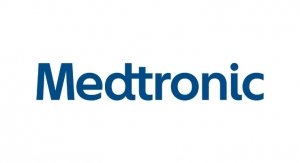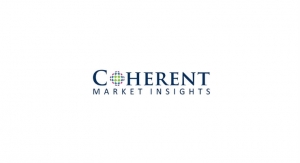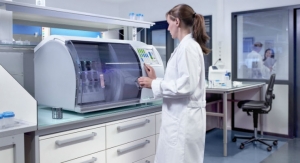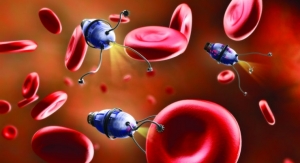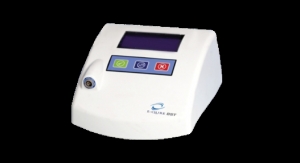Alexa Sussman, Content Marketing Writer, EtQ05.01.17
From medical device production to pharmaceutical manufacturing, the life sciences demand highly regulated operations. In a perfect world, these products would be without defect every time, but the reality is processes can stray from compliance and cause quality issues that affect people’s health.
Therefore, audits are necessary to maintain compliance in a fast-paced business landscape with so much impact on the health of its consumers. When an organization knows an audit is approaching, they ensure their processes, documents, and products are all up to regulatory standards. Constantly maintaining a state of audit-readiness leads organizations to be efficient and in compliance at all times.
Since audits are both a motivation for compliance and a diagnostic tool to identify organizational strengths and weaknesses, regulatory bodies must be smart with audit requirements so organizations continue to see them as an opportunity rather than a pain point. They constantly revise surrounding laws to make processes effective and efficient for both them and the participating manufacturers.
Latest Changes in Regulatory Audit Law
When regulatory audit laws change, the medical device and pharmaceutical industries feel the impact. Recently, there have been major updates to these laws to change the process on a global scale. The goal of these laws is for countries to recognize the audits and inspections of other countries, making the audit process a global, collaborative act.
Early in March, Canada launched the Medical Device Single Audit Program (MDSAP). The new regulatory framework will tentatively replace the current Canadian Medical Devices Conformity Assessment System by January 2019. The replacement act allows medical device manufacturers to undergo a single audit that satisfies the requirements of all the participating countries: the United States, Australia, Brazil, Canada, and Japan.
The U.S. Food and Drug Administration (FDA) and European Union (EU) announced similar updates around the same time. The FDA and the European Commission revealed the Mutual Recognition Agreement (MRA) on March 2. Under this regulatory framework, the United States and EU will be able to recognize each other’s audits at pharmaceutical manufacturing facilities. This act is an amendment to the 1998 Pharmaceutical Sectoral Annex, the original recognition between U.S. and EU regulatory bodies. These new standards will be officially recognized in November 2017, with plans for full implementation by 2019.
Benefits of Single Audit Programs
Single audit programs like these are great news for many medical device and pharmaceutical companies large and small. For example, many U.S. life science companies have some manufacturing sites outside of the United States. Of those outsourced outside the United States, most are in the EU. The MRA is extremely beneficial to those organizations.
But it’s not just American companies that will benefit. One audit to satisfy multiple regulatory bodies’ requirements streamlines the entire audit process for all involved—both auditor and manufacturer. Following are some of the major benefits life science organizations and regulatory bodies will see under single audit programs, using the MRA as an example.
1. Eased Pain Points with Harmonized Audit Programs
Under this new regulatory framework, both the FDA and the EU will see more manageable workloads. When announcing the upcoming program earlier in March, the FDA said, “Strengthening the use of each other’s drug inspection expertise and resources will result in greater efficiencies for both regulatory systems and provide a more practical means to oversee the large number of drug manufacturing facilities.” Collaboration efforts between the two organizations will allow them to perform at a higher standard that takes the best from both parties.
EU regulatory professionals agree. “The enhanced cooperation with U.S. regulatory authorities will improve the EU’s ability to identify and address problems at factories before they become a public health risk,” the European Commission announced in a press release.
To create a successful multi-body program, regulatory bodies need to collaborate to create a harmonized audit plan that maintains consistency and an appropriate level of standards throughout. The FDA has outlined the steps it will take with the EU to create such an audit plan. Starting in 2014—with plans to finish before the end of 2017—the FDA has been observing and assessing scheduled audits for every EU country to determine the strength of their audit programs. Likewise, in September 2015, EU officials met at three different FDA district offices, and later began observing FDA audits in late 2016.
Once their assessments are complete, U.S. and EU regulatory agencies will compare findings. By combining the most efficient and effective aspects of each party’s audit procedure, the agencies can create a single, harmonized set of standards. Taking the time to define best practices for audits and inspections now eases the workload in the future. It also instills confidence in pharmaceutical organizations that future audits will be standardized and complete, regardless of who conducts it.
2. Lowered Costs
Under the MRA, the FDA and EU must conduct as few as half the number of audits. This lowers the overall cost of quality for auditors because of the reduced amount of money spent on personnel, travel, and time to conduct on-site audits.
However, this benefit of lowered costs extends beyond just auditors and regulatory bodies. “[The MRA] will also reduce administrative burdens and costs facing pharmaceutical manufacturers, including smaller producers,” the European Commission press release said. Reducing costs associated with interruption of business operations, audit preparation, and conducting the audit could result in many smaller manufacturers benefitting from increased profit margins.
A mutually beneficial plan where both sides reduce operational costs is a benefit too important to overlook. Lowering costs for both auditors and manufacturers is a major highlight of a single audit program like the MRA.
3. Reduction in Regulatory Pressure
When it comes to audits, there is often pressure facing both those conducting the audits and those being audited. Manufacturers that would previously be audited by both the FDA and the EU often faced pressure to be simultaneously prepared for two completely different inspection processes, sometimes not knowing which would be next.
Regulatory bodies faced pressure to inspect an ever-increasing number of sites in a short amount of time. They want to do their jobs completely and effectively because public health depends on it; however, focusing all their time on conducting and following up on audits diminishes any other priority tasks.
Both the European Commission and the FDA have other initiatives and priorities beyond conducting audits, and they need just as much time and attention. Each organization can focus on things other than repeat audits thanks to more time available under a single audit program, rather than previous plans. For example, the FDA may be able to allocate more resources to tasks like streamlining the often-criticized drug approval process.
The pressure will also be reduced on pharmaceutical manufacturing organizations to prepare for different audits from various regulatory bodies. Under the MRA, there will be less deviation from one regulatory body to the next. These organizations can then allot time to better plan for audits, setting long-term goals based off the single audit rather than scrambling to adjust plans already in motion. A standard audit provides organizations a set procedure for audit preparation, so the rest of their time can be spent on developing products and improving operational excellence.
4. Eliminate Unnecessary Business Interruptions
Previously, the EU and the FDA would both inspect some of the same facilities within the same year. This would be very disruptive for manufacturers as many operations would need to pause all operations more than once in a year to properly prepare for an audit or have it conducted. FDA inspections and regulatory audits are not quick and easy measures—preparation and conduction can take days. The absence of business interruptions allows for a continued workflow leading to streamlined processes.
Regulatory bodies also won’t have their business interrupted as much to conduct audits that could potentially be unnecessary. Their resources can then be allocated more toward high-risk locations and reaching a larger amount of facilities in a shorter amount of time. In turn, this should lower the amount of public health issues stemming from pharmaceuticals while easing the workload of regulatory bodies.
These upcoming changes will positively affect the life science industry. However, as with any change, organizations may have difficulties or hesitations when it comes to the transition. But once organizations embrace the new audit programs, they will see the benefits. Finally, a few tips for streamlining your audit process for success under the new program:
Alexa Sussman is a marketing content writer for ETQ . She is responsible for developing and writing content for EtQ, a leading enterprise quality and compliance management software vendor, as well as traqpath, EtQ’s compliance and event-tracking solution.
Therefore, audits are necessary to maintain compliance in a fast-paced business landscape with so much impact on the health of its consumers. When an organization knows an audit is approaching, they ensure their processes, documents, and products are all up to regulatory standards. Constantly maintaining a state of audit-readiness leads organizations to be efficient and in compliance at all times.
Since audits are both a motivation for compliance and a diagnostic tool to identify organizational strengths and weaknesses, regulatory bodies must be smart with audit requirements so organizations continue to see them as an opportunity rather than a pain point. They constantly revise surrounding laws to make processes effective and efficient for both them and the participating manufacturers.
Latest Changes in Regulatory Audit Law
When regulatory audit laws change, the medical device and pharmaceutical industries feel the impact. Recently, there have been major updates to these laws to change the process on a global scale. The goal of these laws is for countries to recognize the audits and inspections of other countries, making the audit process a global, collaborative act.
Early in March, Canada launched the Medical Device Single Audit Program (MDSAP). The new regulatory framework will tentatively replace the current Canadian Medical Devices Conformity Assessment System by January 2019. The replacement act allows medical device manufacturers to undergo a single audit that satisfies the requirements of all the participating countries: the United States, Australia, Brazil, Canada, and Japan.
The U.S. Food and Drug Administration (FDA) and European Union (EU) announced similar updates around the same time. The FDA and the European Commission revealed the Mutual Recognition Agreement (MRA) on March 2. Under this regulatory framework, the United States and EU will be able to recognize each other’s audits at pharmaceutical manufacturing facilities. This act is an amendment to the 1998 Pharmaceutical Sectoral Annex, the original recognition between U.S. and EU regulatory bodies. These new standards will be officially recognized in November 2017, with plans for full implementation by 2019.
Benefits of Single Audit Programs
Single audit programs like these are great news for many medical device and pharmaceutical companies large and small. For example, many U.S. life science companies have some manufacturing sites outside of the United States. Of those outsourced outside the United States, most are in the EU. The MRA is extremely beneficial to those organizations.
But it’s not just American companies that will benefit. One audit to satisfy multiple regulatory bodies’ requirements streamlines the entire audit process for all involved—both auditor and manufacturer. Following are some of the major benefits life science organizations and regulatory bodies will see under single audit programs, using the MRA as an example.
1. Eased Pain Points with Harmonized Audit Programs
Under this new regulatory framework, both the FDA and the EU will see more manageable workloads. When announcing the upcoming program earlier in March, the FDA said, “Strengthening the use of each other’s drug inspection expertise and resources will result in greater efficiencies for both regulatory systems and provide a more practical means to oversee the large number of drug manufacturing facilities.” Collaboration efforts between the two organizations will allow them to perform at a higher standard that takes the best from both parties.
EU regulatory professionals agree. “The enhanced cooperation with U.S. regulatory authorities will improve the EU’s ability to identify and address problems at factories before they become a public health risk,” the European Commission announced in a press release.
To create a successful multi-body program, regulatory bodies need to collaborate to create a harmonized audit plan that maintains consistency and an appropriate level of standards throughout. The FDA has outlined the steps it will take with the EU to create such an audit plan. Starting in 2014—with plans to finish before the end of 2017—the FDA has been observing and assessing scheduled audits for every EU country to determine the strength of their audit programs. Likewise, in September 2015, EU officials met at three different FDA district offices, and later began observing FDA audits in late 2016.
Once their assessments are complete, U.S. and EU regulatory agencies will compare findings. By combining the most efficient and effective aspects of each party’s audit procedure, the agencies can create a single, harmonized set of standards. Taking the time to define best practices for audits and inspections now eases the workload in the future. It also instills confidence in pharmaceutical organizations that future audits will be standardized and complete, regardless of who conducts it.
2. Lowered Costs
Under the MRA, the FDA and EU must conduct as few as half the number of audits. This lowers the overall cost of quality for auditors because of the reduced amount of money spent on personnel, travel, and time to conduct on-site audits.
However, this benefit of lowered costs extends beyond just auditors and regulatory bodies. “[The MRA] will also reduce administrative burdens and costs facing pharmaceutical manufacturers, including smaller producers,” the European Commission press release said. Reducing costs associated with interruption of business operations, audit preparation, and conducting the audit could result in many smaller manufacturers benefitting from increased profit margins.
A mutually beneficial plan where both sides reduce operational costs is a benefit too important to overlook. Lowering costs for both auditors and manufacturers is a major highlight of a single audit program like the MRA.
3. Reduction in Regulatory Pressure
When it comes to audits, there is often pressure facing both those conducting the audits and those being audited. Manufacturers that would previously be audited by both the FDA and the EU often faced pressure to be simultaneously prepared for two completely different inspection processes, sometimes not knowing which would be next.
Regulatory bodies faced pressure to inspect an ever-increasing number of sites in a short amount of time. They want to do their jobs completely and effectively because public health depends on it; however, focusing all their time on conducting and following up on audits diminishes any other priority tasks.
Both the European Commission and the FDA have other initiatives and priorities beyond conducting audits, and they need just as much time and attention. Each organization can focus on things other than repeat audits thanks to more time available under a single audit program, rather than previous plans. For example, the FDA may be able to allocate more resources to tasks like streamlining the often-criticized drug approval process.
The pressure will also be reduced on pharmaceutical manufacturing organizations to prepare for different audits from various regulatory bodies. Under the MRA, there will be less deviation from one regulatory body to the next. These organizations can then allot time to better plan for audits, setting long-term goals based off the single audit rather than scrambling to adjust plans already in motion. A standard audit provides organizations a set procedure for audit preparation, so the rest of their time can be spent on developing products and improving operational excellence.
4. Eliminate Unnecessary Business Interruptions
Previously, the EU and the FDA would both inspect some of the same facilities within the same year. This would be very disruptive for manufacturers as many operations would need to pause all operations more than once in a year to properly prepare for an audit or have it conducted. FDA inspections and regulatory audits are not quick and easy measures—preparation and conduction can take days. The absence of business interruptions allows for a continued workflow leading to streamlined processes.
Regulatory bodies also won’t have their business interrupted as much to conduct audits that could potentially be unnecessary. Their resources can then be allocated more toward high-risk locations and reaching a larger amount of facilities in a shorter amount of time. In turn, this should lower the amount of public health issues stemming from pharmaceuticals while easing the workload of regulatory bodies.
These upcoming changes will positively affect the life science industry. However, as with any change, organizations may have difficulties or hesitations when it comes to the transition. But once organizations embrace the new audit programs, they will see the benefits. Finally, a few tips for streamlining your audit process for success under the new program:
- Incorporate software to store audit templates and download regulatory forms for quick access.
- Use CAPAs when audits reveal less than stellar results to quickly and completely correct the issue.
- Document and save all audit records to look back at what previous results were and plan for better future outcomes.
Alexa Sussman is a marketing content writer for ETQ . She is responsible for developing and writing content for EtQ, a leading enterprise quality and compliance management software vendor, as well as traqpath, EtQ’s compliance and event-tracking solution.





